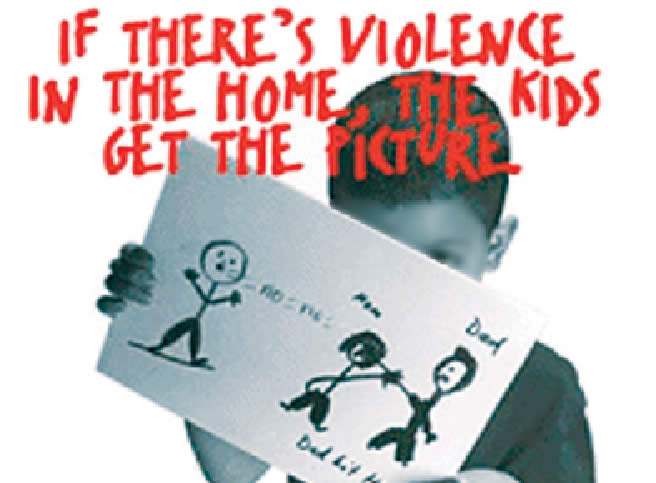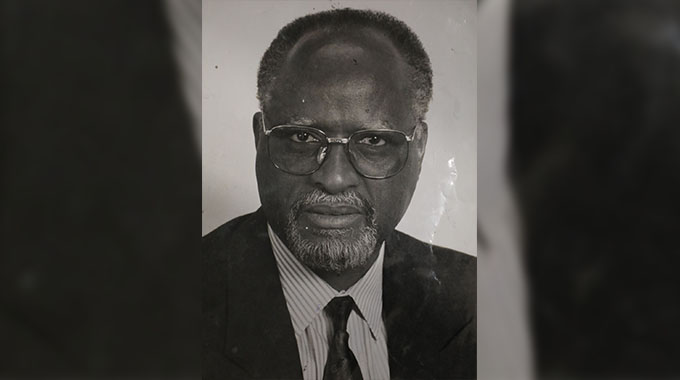Impact of violence on children

Sandisiwe Mahlangu
What do children need? We know the answer from our own childhood. First and foremost, children need a safe and secure home, free of violence and parents that love and protect them. They need to have a sense of routine and stability so that when things go wrong in the outside world, home becomes a place of comfort, help and support.
For many children, home is far from a safe haven. Every year, hundreds of millions of children are exposed to domestic violence at home and this has a powerful profound impact on their lives and hopes for the future. These children not only watch one parent violently assaulting another, they often hear the distressing sounds of violence or may be aware of the tell-tale signs.
Violence in the home is one of the most pervasive human rights challenges of our time. It remains a largely hidden problem that few countries, communities or families openly confront. Violence in the home is not limited by geography, ethnicity or status; it is a global phenomenon. In our own country we are reading almost on a daily basis on reports of domestic violence to the extent of children witnessing one of their parents being murdered by the other.
The devastating effects of domestic violence on women are well documented. Far less is known about the impact on children who witness a parent being subjected to violence. These children — the forgotten victims of violence in the home — are the focus of this article.
Domestic violence is defined as, “A pattern of abusive behaviour in any relationship that is used by one partner to gain or maintain power and control over another intimate partner”. Domestic violence can be physical, sexual, emotional, economic or psychological. Examples of physical abuse include slapping, beating with fist or object, strangulation, burning, kicking and threats with a knife. Sexual abuse includes coerced sex through threats or intimidation or through physical force, forcing unwanted sexual acts, forcing sex in front of others and forcing sex with others. Psychological abuse involves isolation from others, excessive jealousy, control of your partner’s activities, verbal aggression, intimidation through destruction of property, harassment or stalking, threats of violence and constant belittling and humiliation.
Exposure to both domestic violence and child maltreatment can have immediate and often long term impact on children and youth. Children who have been exposed to domestic violence are more likely than their peers to experience a wide range of difficulties and the potential effects vary by age and developmental stage. The challenges faced fall into the following categories:
Behavioural, social and emotional problems
Children in families experiencing domestic violence are more likely than other children to exhibit signs of depression and anxiety; higher levels of anger and/or disobedience; fear and withdrawal; poor peer, sibling and social relationships and low self-esteem. Hyperarousal is also experienced whereby the child easily become jumpy, nervous or easily startled; repetitive talk or play about the domestic violence, for example a young girl may act out violence when playing with her dolls.
Cognitive and attitudinal problems
Children exposed to domestic violence are more likely than their peers to experience difficulties in school and with concentration and task completion; score lower on assessments of verbal, motor and cognitive skills; lack conflict resolution skills and possess limited problem solving skills. They are more likely to exhibit pro-violence attitudes. Feelings of guilt and self-blame may be experienced whereby the child may blame him/herself to be the cause of the violent events at home.
Long term problems
Witnessing violence as a child is associated with adult depression, trauma related symptoms and low self-esteem especially among women and lower social adjustment. Substance abuse, impulsive acts of risky sex and unintended pregnancy, self-destructive and suicidal behaviours are also included in this category.
Factors that influence impact of domestic violence on children include:
l Nature of the violence. Children who witness frequent and severe forms of violence or fail to observe their caretakers resolving conflict may undergo more distress than children who witness fewer incidences of physical violence and experience positive interactions between their caregivers.
l Age of the child. Younger children appear to exhibit higher levels of emotional and psychological distress than older children. Children aged five and younger may experience developmental regression- the loss of acquired skills; disruptions in eating or sleeping habits, having nightmares and bedwetting. Adolescents may exhibit impulsive and/or reckless behaviour such as substance abuse and early sexual behaviours or running away from home.
l Elapsed time since exposure. Children often have heightened levels of anxiety and fear immediately after a violent event. Fewer observable effects are seen in children as time passes after a violent event.
l Gender. In general, boys exhibit more externalised behaviours (for example aggression and acting out) while girls exhibit more internalised behaviours (for example withdrawal and depression).
l Presence of child physical or sexual abuse. Children who witness domestic violence and are physically or sexually abused are at a higher risk for emotional and psychological maladjustment than children who witness violence and are not abused.
Despite these findings, not all children exposed to domestic violence will experience negative effects. Children’s risk levels and reactions to domestic violence exist on a continuum; some children demonstrate enormous resilience, while others show signs of significant maladaptive adjustment.
Protective factors such as social competence, intelligence, high self-esteem and a supportive relationship with an adult (especially a non-abusive parent) can help protect children from the adverse effects of exposure to domestic violence.
Children and youth learn about healthy relationships by watching and modelling the relationships they witness. Children who are exposed to domestic violence may later repeat the abuse they see, thinking that it is a normal part of relationships. This can be especially concerning with young adults forging their first romantic relationships.
What children need
Children need a safe and secure home environment. Every child has the right to grow up safe from harm and should feel that those they love are also protected. Violence in the home shatters a child’s basic right to feel safe and secure in the world. Children want violence to stop.
They need to know there are adults who will listen to them, believe them and shelter them. Adults who work with children, including teachers, social workers, relatives and parents themselves, need awareness and skills to recognise and meet the needs of children exposed to violence in the home and to refer children to appropriate services. Close dependable relationships can also help children reduce the stress of living in a violent home.
Children who have an adult who gives them love, warmth and attentive care cope better than those who do not. These children need to know that they are not alone and that the violence is not their fault.
Children need a sense of routine and normalcy. Violence in the home can turn a child’s world upside down. Routines such as going to school and participating in recreational activities are vital for children’s development and wellbeing. These should be maintained all times.
Children need support services to meet their needs. Responses to children exposed to domestic violence should be holistic and comprehensive, taking into account the range of effects and needs of different children. Children must have places to go that are safe and supportive, whether it be with extended family or at a domestic violence shelter. Studies suggest that providing interventions to abused mothers can also have benefits to children especially where these efforts take into account the specific needs of children.
Children need to learn that domestic violence is wrong and grasp non-violent methods of resolving conflicts. It should be re-affirmed that domestic violence is wrong. They have to see alternative role models in order to grow up with a positive viewpoint of life. Schools are key in reducing aggression and violence by helping children develop positive attitudes and values through various programmes.
The school programmes should offer a broader range of skills to avoid violent behaviour. Other successful programmes emphasise conflict resolution, cooperative play and positive role models.
Children who are exposed to violence in the home need adults to speak out and break the silence. They need to know that things can change. Children need hope for the future. Public education and awareness raising campaigns on domestic violence should focus more on the impact on children and specific ways to address this hidden problem. Governments and other public institutions should speak about the impact of violence on children.
Children can get help from Childline’s toll free number which is 116.
Sandisiwe Mahlangu is a health professional with psychiatric mental health qualification. She can be contacted on Cell: 0774 782 282 or e-mail: [email protected]










Comments